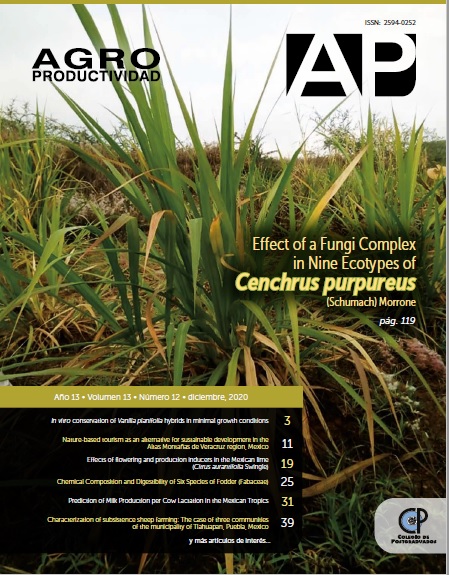Effect of a Fungi Complex in Nine Ecotypes of Cenchrus purpureus (Schumach) Morrone
##plugins.themes.bootstrap3.article.main##
Keywords
Growth, Forage, Mycorrhiza, Elephant grass, Yield.
Resumen
Objective: The objective of this study was to evaluate the response of different concentrations of a fungal consortium on the growth and yield of Cenchrus purpureus ecotypes under storm conditions.
Design/Methodology/Approach: An experiment was established under a completely randomized design with a 9X2X4 factorial arrangement. The factors were 9 ecotypes of Cenchrus purpureus, two seasons of the year (Summer-Fall and Winter-Spring), and four levels of mycorrhizal consortium. The variables evaluated were: number of buds, number of leaves, height of the bud, leaf length, total biomass, and leaf-stalk ratio.
Results: The response of the ecotypes had a differential effect on the variables NB, LLL, TB and L/SR, while the season affected the variables LN, PH, LLL, MLL, SLL, TB and L/SR. Low inoculation levels increased the variables NB, PH, LLL, MLL and TB.
Study Limitations/Implications: The evaluated factors indicate that the level of inoculant and the season determine the growth and yield of Cenchrus purpureus.
Findings/Conclusions: The mycorrhizal consortium dose and season of the year mainly determined the growth and yield of C. purpureus. Ecotypes respond differently to changes in the season and in mycorrhizal consortium dose. The evaluated factors indicate that the mycorrhiza dose and the season of the year determine the growth and yield of C.
purpureus. Two growth strategies of the ecotypes are visualized: 1) many buds, with few small leaves and 2) few buds with many large leaves

